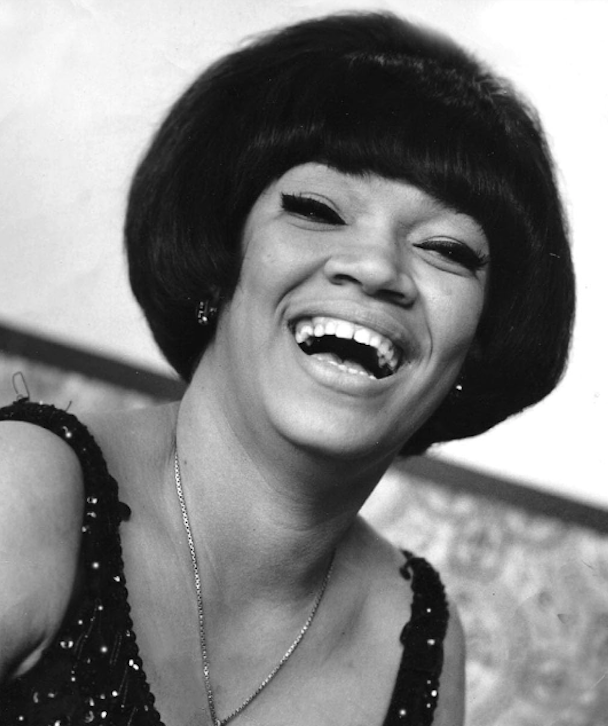Tito Puente’s legacy lives on… with a special doodle.
In celebration of Hispanic Heritage Month, Google is commemorating the late Puerto Rican musician, songwriter, bandleader, and record producer, known as the King of Latin Music, with a charming new Doodle video, created by New York-based Puerto Rican illustrator Carlos Aponte.
 “Tito was part of my musical experience growing up in Puerto Rico. My aunt introduced me to Tito Puente via La Lupe, a famous singer in Puerto Rico and New York,” says the illustrator. “Tito was like a Svengali for talents like Celia Cruz. He was a household name. So Tito was part of my Puerto Rican soundtrack.”
“Tito was part of my musical experience growing up in Puerto Rico. My aunt introduced me to Tito Puente via La Lupe, a famous singer in Puerto Rico and New York,” says the illustrator. “Tito was like a Svengali for talents like Celia Cruz. He was a household name. So Tito was part of my Puerto Rican soundtrack.”
Featuring the lively “Ran Kan Kan,” the animated clip takes viewers back to Puente’s childhood at 110th Street and Third Avenue in Spanish Harlem, where the budding artist bangs on pots and pans in his room bedecked with a Puerto Rican flag. It follows Puente’s various stints as a musician, showing him as a U.S. Navy ship’s bandleader (he served during World War II) up to him ruling over New York City nightlife as the undisputed King of the Timbales.
 The Google Doodle also celebrates the one-year anniversary of the Tito Puente Monument, which was unveiled in his hometown of East Harlem, New York, on this day (Oct. 10), located on the northern end of Central Park.
The Google Doodle also celebrates the one-year anniversary of the Tito Puente Monument, which was unveiled in his hometown of East Harlem, New York, on this day (Oct. 10), located on the northern end of Central Park.
In 2000, the same year the musical legend died, 110th Street was renamed Tito Puente Way.
Born Ernesto Antonio Puente Jr. on April 20, 1923, in Spanish Harlem to Puerto Rican parents, the young Nuyorican musician grew up surrounded by the rich Latin diversity the city is known for. He led his first orchestra in the late ‘40s, and by the 1950s, he became an unrivaled master of timbales and vibraphone. In 1969, he was bestowed the key to New York City.
In his lifetime, he released an immense discography that includes more than 100 full-length albums that showcased his propulsive dance rhythms and jubilant brass melodies. He penned timeless hits such as “Oye Como Va,” which was famously covered by Santana, “Mambo Gozón” (1958), “La Guarachera” (1966) with Celia Cruz, and many more. In the late ‘60s, Tito Puente joined New York’s maverick troupe Fania All-Stars, also starring Eddie Palmeri, Ricardo Ray and Bobby Cruz.
His journey began with “Ran Kan Kan,” his first recorded track, which is featured in the Google Doodle. In 1992, “Ran Kan Kan” entered the top 10 of Billboard‘s Dance Club Songs chart. In 2010, “Guantanamera” by Celia Cruz, featuring Puente, landed at No. 2 on the World Digital Song Sales chart. In 1995, Puente was given the Billboard Latin Music Lifetime Achievement Award.
Last year, Google Doodles honored Latin culture independence days, celebrating Guatemala, Honduras, El Salvador, Nicaragua, Costa Rica and Mexico. Another Doodle celebrated a Chilean holiday with a drawing of a huemul, represented on the country’s national shield.
Illustrator Aponte has also provided artwork for the Latin Recording Academy, The New Yorker and The New York Times. He currently teaches drawing at the Fashion Institute of Technology. With his Doodle, he hopes people will take away this message: “Love what you do, train, study, and be the best you can be. If you excel, everything else will fall into place. There are no shortcuts. Those who make it easily don’t last long. Tito was a perfect example; he was the best!”
 La Lupe, whose full name is Lupe Victoria Yolí Raymond, was a Cuban singer of boleros, guarachas and Latin soul who was known for her energetic, sometimes controversial performances.
La Lupe, whose full name is Lupe Victoria Yolí Raymond, was a Cuban singer of boleros, guarachas and Latin soul who was known for her energetic, sometimes controversial performances.



